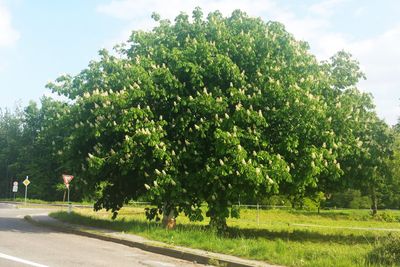What are Horse Chestnuts?
You may be wondering, What are horse chestnuts? Horse chestnuts (Aesculus hippocastanum) are large flowering trees, similar to buckeyes, with showy, white blooms in spring. These are followed by attractive, spiny, green seedpods from midsummer through fall. In addition to their beautiful flowers and seedpods, horse chestnut trees also exhibit interesting bark with twisted limbs. One note of caution: do not confuse these ornamental tree with other chestnut trees (Castanea genus), which are edible. The fruit of horse chestnuts should not be eaten.
Growing a Horse Chestnut Tree
The most important factor when growing a horse chestnut tree is location. Horse chestnuts thrive in USDA plant hardiness zones 3-8 in areas having full sun and well-drained, but moist, humus-rich soil. These trees do not tolerate excessively dry conditions. Horse chestnut trees are usually planted in spring or fall, depending on climate. Since they are normally purchased as container or burlapped plants, the planting hole should be about three times their width and deep enough to accommodate them with the top of the rootball flush with the soil. Once the tree is placed in the hole, ensure it is straight before adding some of the soil to anchor it in place. Fill the hole with water, allowing it to absorb before adding organic matter and remaining soil. Tamp down lightly to eliminate any air pockets and add a layer of mulch to help retain moisture and keep out weeds. Water newly planted trees regularly. Established trees require little care other than occasional pruning in late winter as needed.
Growing Horse Chestnut Seeds or Conkers
The horse chestnut can also be grown from seeds or conkers. The spiny seedpods drop from the tree in fall when ripened and crack open to reveal the horse chestnut seeds inside. Horse chestnut seeds should be planted as soon as possible. Do not allow them to dry out. They also germinate rather quickly and are best sown outdoors in a cold frame. They can also be placed in a plastic bag outside for a couple of weeks. Once roots begin sprouting, plant them in pots of composted soil. Horse chestnut seedlings can be planted in their permanent locations the following spring or fall, or whenever they reach about a foot (30 cm.) or so tall. Growing a horse chestnut tree is easy and well worth the little effort involved. The tree makes a wonderful addition to the landscape for years of enjoyment.
